International Political Economy studies the political battle and challenges between the losers and winners from a global economic exchange. Globalism plays the main role in Oatley s opinion.
Political competition in international relation shapes free trades and extends them so rapidly. International political economy emphasizes that it is hard to understand anything about the international economy (practically and theoretically) without understanding political competition unfolds.
International political economy has studied the global economy traditionally within three schools: Marxism, Mercantilism, and Liberalism.
Our main question is that how Mercantilists, Marxists, and liberals define relation between politics and economy.
Mercantilism is an economic theory, thought to be a form of economic nationalism that holds that the prosperity of a nation is dependent upon its supply of capital and that the global volume of international trade is unchangeable.
Adam Smith used the" Mercantile System" as a phrase to explain the kind of political-economic system based on nationalism.
Mercantile System based on limitation of import and extension of export to evaluate economic and political power of the country.
But Karl Marx and Marxists don’t agree with mercantilism. Marx identifies an "Economy" as a context of power in the country than identity politics and culture as a superstructure.
Marx and Friedrich Engels co-founder of Marxism believe that the person is exploited if performs more labour than necessary to produce the goods that he consumes; likewise, a person is an exploiter if he or she performs less labour than is necessary to produce the goods that he consumes. Exploitation is a matter of surplus labour — the amount of labour one performs beyond what one receives in goods. Exploitation has been a socio-economic feature of every class society and is one of the principal features distinguishing the social classes.
Marxists in one hand tries to identify economy as a context and in other hands, they determinate economy in the relation between production and consumption. Even neo-Marxists did not and don’t solve this clear paradox.
However, in this system we cannot find logical relation between capital and consumption ant this guide us to anarchism in export and import. (Exactly we perceive in Cuba and North Korea).
The third school is Liberalism that underlines individual liberty and equal rights. Liberalists don’t believe Marx opinion about private ownership
In other hand they believe that the economy should not be defined within nationalism (like Mercantilists). Classical liberals broadly emphasized the importance of free markets.
In free markets, you can find anything and everything! Interference of states in markets and opening economic doorways to other countries is upholding in Liberalism. But linkage between markets and slight power of states causes terrible problems like new economic crises., Oatley prefers not to focus on Mercantilism, liberalism and Marxism as the three traditional schools .he try to find the new approach in order to international political economy.
The World Trade Organization and the World Trade System
The World Trade Organization (WTO), commenced in 1995, is an organization that supervises international trade. The "GATT" replaced by WTO in 1948. the organization deals with regulation of trade between participating countries.it provides a framework for formalizing trades agreements.
It is the main duty of WTO to review the national trade policies and ensure the transparency of trade policies through surveillance in global economy.
The WTO is based on two core principles. Market Liberalism and Nondiscrimination. Market Liberalism asserts that an open or liberal, international trade system raises the world’s standard of living.
Nondiscrimination is the second core principle of the multilateral trade system. Nondiscrimination ensures that each member of WTO faces identical opportunities to trade witch the other members.
Most Favored Nation is a level treatment accorded by one state to another player in international economic system.
This concept is too practical in the relation between members of WTO .however the country which is the recipient of this treatment must nominally receive equal trade advantages as the most favored nation by the country granted such treatment. these advantages include high import quotas or low tariffs.
A country that has been accorded MFN status may not be treated less advantageously than any other player (country) with MFN status by the promising country.
A political system such as the WTO reflect the interests of those who create them. here we should focus on the role of superpowers.
The multilateral trade system is an international political system.it provides rules that regulate how governments can use policies to influence the cross-border flow of goods and services.
It provides decision-maker process through which governments revise existing rules and create new ones. The scope of WTO rules has expanded during the last 15 years and will likely expand in future.
The Political Economy of International Trade Organization
Oatleys tries to tell us how the political economy of international trade organization shaped and developed. His case study in this chapter is WTO.
Oatley begins this chapter by the important question: "Why does WTO exist?"
He mentions that we can answer to this question within historical and logical approach. In historical approach, The "GATT" replaced by WTO in 1948. The organization deals with regulation of trade between participating countries.it provide a framework for formalizing trades agreements. Then we can remember DOHA talks and etc.
But Oatley in his new mentions on the logical approach.in this more abstract logic; WTO exists because it helps governments work together in pursuit of mutual gain. The world trade system is treated as a specific instance of the more general problem of cooperation.
Here Oatley analyzes some practical models, helping us to survey process of WTO. Maybe the model which is more important and practical than the others is a Heckscher-Ohlin model. The Heckscher–Ohlin model is a mathematical model of international trade, developed by Eli Heckscher and Bertil Ohlin.
It based on Ricardo's theory of comparative advantage by predicting patterns of commerce and production based on the factor endowments of a trading region.
The model says that countries will export products that utilize their abundant and cheap factors of production and import products that utilize the countries' scarce.
Relative factors of the production (land, labor, and capital) determine a country's comparative advantage. Countries have comparative advantages in those goods for which the required factors of production are relatively abundant locally. Goods that require inputs that are locally abundant will be cheaper to produce than those goods that require inputs that are locally scarce. We should pay attention to these factors simultaneity (land, labor, and capital)
Finally, Oatley mentions that WTO exists, therefore it facilitates international cooperation, thereby enabling societies to capture the welfare gains available from trade. Trade raises social welfare by enabling consumers to enjoy a higher level of utility than if they could consume only goods produced at home.
The Society-centered approach to Trades Politics
The society-centered approach helps us understand how the interaction between societal interests and political institution shapes trade politics, it does have weaknesses. Here Otlay explains some theories and approaches, mainly explaining factor-model and sector model and also refers to "Factor Price Equalization".
Factor prices equalization is an economic theory which centralizes on related prices for two identical factors on production in the same market.
The theory states that the relative prices for two identical factors of production in the same market will eventually equal each other because of competition.
Here, we can imagine an action and reaction between two factors in the same system.
(NAFTA) is a good enough example to explain this theory. After signification of North American Free Trade, labor wages fell in the United States but at the same rose in Mexico.
This theory helps us to know society-center approach better and better.in other hands, Oatley refers to Factor model and Sector model.
Factor model and Sector models in economy are two different models for annotating phenomenon. Both of them are so practical but different in use. A Factor model is mathematical calculation of the extent to which macroeconomic factors affect the securities in a portfolio. Factor models attempt to account for contingencies like changes in interest rates or inflation. Factor models fall into three main categories. A macroeconomic factor model considers relevant risks to the wider economy. Here we talk about frames and math.
But in sector model, we talk about progress, not math! The benefits of the application of this model include the fact it allows for an outward progression of growth. As with all simple models of complex phenomena, its validity is limited.
Finally, Oatley says that the society-centered approach does not explain trade policy outcomes.it tells us that trade politics will be characterized by conflict between the winners and losers from international trade, but it does not help us explain which of these groups will win the political battle.
A State-Centered Approach to Trade Politics
Oatley concentrated on social-centered approach and explained this approach .here Oatley tells us about A States-Centered approach. He begins with a tangible example about US power.US sometimes goes ahead in international organization lonely and does not pay attention to what the other players in the worlds.
In the example of the book, on October 2004 the US lodged complaint with the World Trade Organization s dispute settlements mechanism (Story of SAS and what did Georg. W .bush s state)
But how we can analyze a power of states? What is the role of superpowers at this point?
Focusing on industry can help us so much about this. There is a direct relation between power of the western states and industry.
Oatly determines the" Infant-Industry Case for Protection "as a recommendation. Infant industry protection is controversial as a policy recommendation. As with the other economic rationales for protectionism, it is often abused by rent-seeking interests
The infant industry argument is an economic rationale for protectionism. The crux of the argument is that nascent industries often do not have the economies of scale that their older competitors from other countries may have, and thus need to be protected until they can attain similar economies of scale.
Many countries have successfully industrialized behind tariff barriers
It is the main point that we should not forget it: even when infant industry protection is well-intentioned, it is hard for governments to know which industries they should protect; "infant" industries may never "grow up" relative to "adult" foreign competitors. For example, during the 1980s Brazil enforced strict controls on the import of foreign computers in an effort to nurture its own "infant" computer industry.
A state-centered approach is based on two central assumptions. First assumption concerns the impact of protectionism on aggregate social welfare.
The second assumption concerns whether governments can operate independently of interest group pressures.
Trade and Development
Oatleyanalyze’ s development of trades in recent decades. He concentrates on NAFTA and GATT once again. He did it on last chapters too, but in chapter 6 and 7 he tries to analyze Trade and Development within import on industrialization.
One of the main points that he refers to Engels Law. Engels Law belongs in 1850, but it is known as an economic law until this time. The law doesn't imply that food spending remains unchanged as income increases.
Engels Law suggests that consumers increase their expenditures for food products less than their increases in income. Other ways, Engel’s Law states that household expenditures on food in the aggregate decline as income rise; in other words, the income elasticity of demand for food in the aggregate is less than one a decline toward zero with income growth. In engels law the income elasticity of demand for food is between 0 and 1.
Also, he refers to the important competing sector. The important competing sector consisted of all activities that were capable of substituting for imports.
The import-competing sector has conventionally been identified with import-substituting industrialization in view of the importance of manufactures in the import bill. However, history of 20th century can guide us about the important competing sector.
Many countries in 1920s were importing substantial quantities of agricultural good that could in principle be produced by domestic activities. Thus, it is also necessary to consider import –substituting agriculture as part of the important competing sector.
The change in relative prices shafted a mechanism of this process.
A fall in the output of the export sector and a rise in the output of import-competing sector would not necessarily produce a recovery in real GDP.
Here he explains that economic reforms in international relations step by step.the creation of G20 and cooperation between regional states (like East Asia) is so important in his research.
The G20 (Group of 20), established on 2003, is a bloc of developing nations that the G-20 accounts for 60% of the world's population, 70% of its farmers and 26% of world’s agricultural exports.
The first authors of G20 were Brazil, India and South Africa.Their foreign ministers signed declaration stated that “major trading partners are still moved by protectionist concerns in their countries’ less competitive sectors and emphasized how important it is that the results of the current round of trade negotiations provide especially for the reversal of protectionist policies and trade-distorting practices.
China and Brazil are two most powerful players of G20 at this time, but totally an economic and political power of G20 is lower than G7.
Also in order to understand chapter 6 and 7 of Oatly s book, it is necessary for us to define General equilibrium theory. It is a branch of theoretical economics. It seeks to explain the behavior of supply, demand, and prices in a whole economy with several or many markets, by seeking to prove that equilibrium prices for goods exist and that all prices are at equilibrium, hence general equilibrium, in contrast to partial equilibrium.
Also In economics, the law of comparative advantage refers to the ability of a party (an individual, a firm, or a country) to produce a particular good or service at a lower opportunity cost than another party. It is the ability to produce a product with the highest relative efficiency given all the other products that could be produced.
As with all models, this is an abstraction from a real economy; it is proposed as being a useful model, both by considering equilibrium prices as long-term prices and by considering actual prices as deviations from equilibrium.
MNA/TT

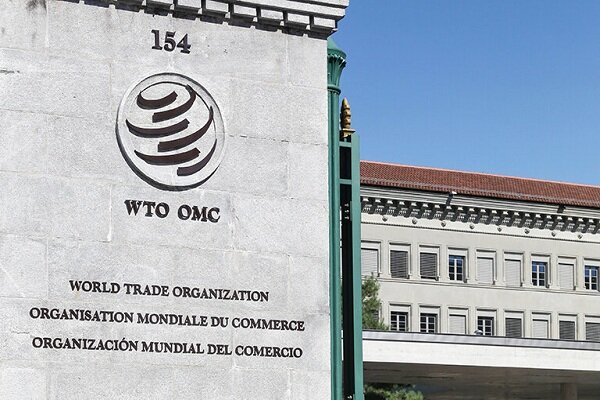


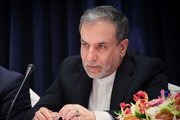
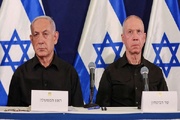

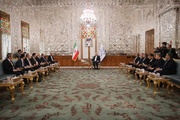

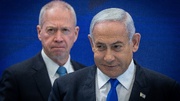
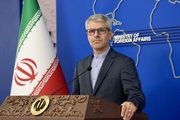
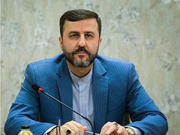



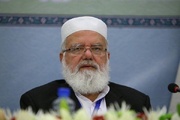
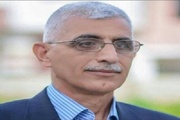
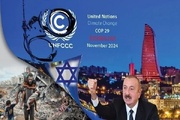

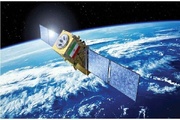

Your Comment